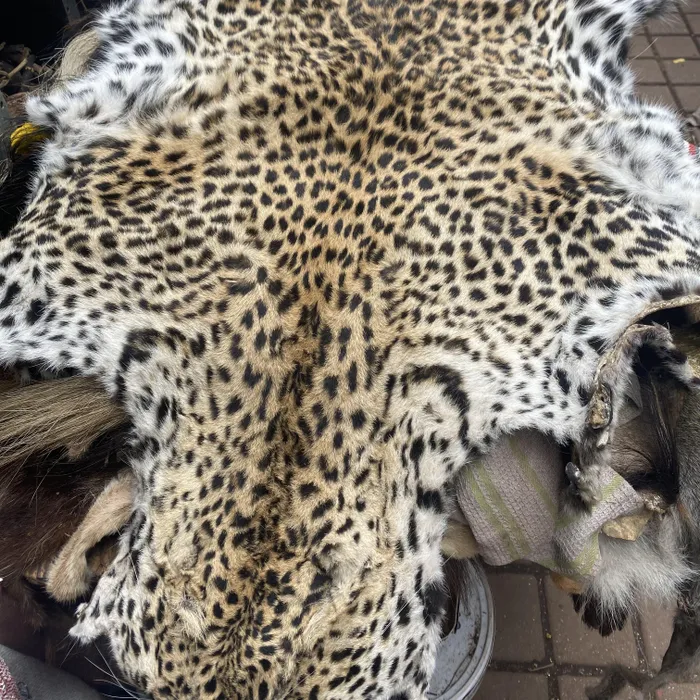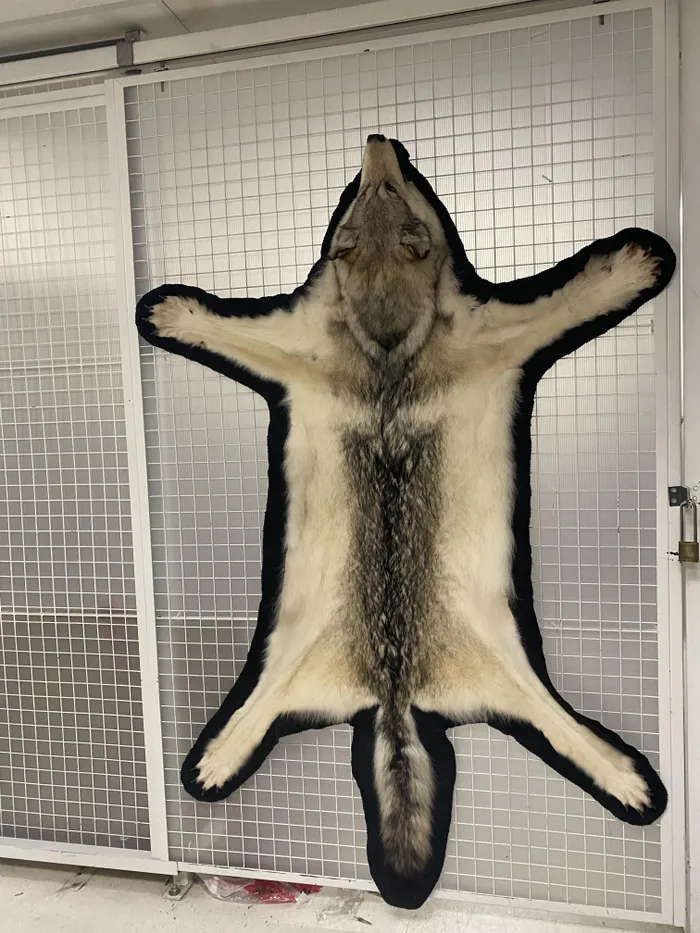How the illegal wildlife trade connects to drug trafficking and arms dealing

Leopard skin in a wildlife market, South Africa.
Image: Michelle Anagnostou/University of Waterloo
THE illegal wildlife trade is deeply connected to other forms of organised crime, including arms dealing, drug trafficking and trafficking in human body parts, among others.
This is according to a new study titled “Disentangling and demystifying converging crimes and illegal wildlife trade in South Africa, Hong Kong, and Canada,” in the Journal of Economic Criminology.
The study was conducted by researchers from the University of Waterloo, the University of Ontario Institute of Technology and the Southern African Wildlife College in South Africa.
Illegal wildlife trade (IWT) involves the harvest, transportation, distribution, and sale of wildlife and wildlife products in violation of national and international laws and regulatory measures.
Researchers interviewed one hundred and twelve law enforcement officials as well as other experts in South Africa, Hong Kong, and Canada.

Seized wolf skin in Canada.
Image: Michelle Anagnostou/University of Waterloo
Drug trafficking, they found, was the type of organised crime most frequently reported by interviewees to converge with IWT.
The authors explained that both in Canada and South Africa, organised crime networks first became successful in drug trafficking before diversifying or transitioning into wildlife trafficking.
"In the case of the rhino horn trade in South Africa, Mozambique, in the early days at the beginning, (we) saw a direct overlap with the drug trade. It was the networks who understood how to move drugs and were involved in corruption and had an apparatus. Individuals would get involved in rhino poaching, and then it escalated into its own thing," one expert said.
Concerning the drug-to-wildlife-trafficking transition in Canada an interviewee commented on a cross-provincial organised crime syndicate that was involved in trafficking in bear gall bladders.
According to the study, the identified convergence there occurred at the marketing level, where individuals were collecting bear gall bladders from poachers and marketing them in the same way that they were previously collecting and selling other illicit commodities, such as drugs. In other cases, the transition had been made in the opposite direction, with successful wildlife traffickers expanding into drug trafficking. A Canadian law enforcement interviewee cited an example of an international IWT operation that had been active for nearly a decade before expanding into narcotics.
In Hong Kong, an interviewee noted that, "It'll be cannabis, heroin, and cocaine. It'll tend to be linked to pangolins from West Africa… The same international organised crime group that's moving all of that."
Similarly, totoaba trafficking in Hong Kong was identified by interviewees as having strong ties to drug trafficking cartels in Mexico.
One type of convergence identified in multiple provinces in Canada is bartering illegal drugs for illegal wildlife products. Heroin and cocaine are used as payment, particularly in many remote communities, the study read.
In one investigation, an interviewee stated that, "we were doing surveillance, and they killed a sturgeon. Instead of loading it into the trunk, another vehicle came down and it was the local [redacted] drug dealers and they were trading the sturgeon directly across for heroin."
In terms of gun trafficking, the study noted that rhino horn traffickers almost inevitably use illegal weapons for protection and for poaching. One expert stated, "I have never had a case in which the firearms used in rhino poaching were not illegal." Another confirmed, "99% of the time, it's illegal firearms."
“However, the special caliber of weapon required to bring down a rhino means that the guns are a key commodity for a rhino trafficking network. Interviewees mentioned that there are individuals in the syndicate who specialise in stockpiling weapons, and they rent them out for rhino poaching, armed robberies, or cash-in-transit heists, and to different groups as needed, acting as a facilitator of crime convergence. Multiple interviewees described recent incidents where they tracked rhino traffickers' vehicles, arrested the individuals, recovered weapons hidden in their cars, and traced those weapons back to cash-in-transit heists.”
The study also found that sometimes firearms that had been confiscated by police leaked back into the hands of wildlife traffickers.
One expert said that, "there have been lots and lots of instances where firearms have been booked into the blue safes...where the (seized gun) exhibits go in. You will find a new (rhino) carcass and do ballistics testing on it, and it will come out to the same weapon that was seized previously. And you go back there and then that firearm is not the store anymore."
“Wildlife trafficking is more than an environmental issue. It is a complex, high-stakes criminal problem that affects public health, biodiversity and human security," said researcher Dr. Michelle Anagnostou.
Cape Times